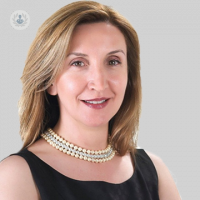Life after a nose job: rhinoplasty risks, results, and more
Autore:There are many reasons why you might choose to undergo a nose job; it may be that you're having difficulties breathing or you don’t like the appearance of your nose. Whatever the case may be, before you undergo any surgery, you will want to know more about the procedure. Esteemed consultant aesthetic and reconstructive plastic surgeon Ms Kallirroi Tzafetta, practicing in Chelmsford, Brentwood, and Sawbridgeworth, discusses the procedure. She explains all there is to know, from types of rhinoplasties, to the results you can expect.

What are the different types of rhinoplasty procedures?
Rhinoplasty procedures can be classified in two different ways. Firstly, there is open and closed rhinoplasty. For open rhinoplasty, a cut is made in the middle of the nose and inside the nostrils to access the bones and cartilage easily. During a close rhinoplasty, however, there is no obvious incision as the operation is performed through the inside of the nostrils.
Also, the procedure can be differentiated as functional, structural, and preservation rhinoplasty. Functional rhinoplasty is a procedure that improves the function of the nose for people who, for example, have difficulties breathing. Structural is to change the shape of the nose with work on the dorsum, and in preservation rhinoplasty, the aim is to preserve the patient’s ligaments on the dorsum and reduce the hump by cutting the bone from the sides.
How is a rhinoplasty performed and how long does it take?
Rhinoplasty is usually carried out through a small incision either on the columella or inside of the nose. As a result, post-operative scarring is minimal or hidden. In total, an open rhinoplasty will last between two-and-a-half to three hours, whilst a closed rhinoplasty will take about ninety minutes.
What are the potential side effects of a rhinoplasty?
As with any surgical procedure, there are risks involved, like infection or bleeding. Apart from the general risks, however, there are specific risks to be aware of when considering rhinoplasty. Such risks include persistent deviation of the septum and nostril asymmetry, which is the uneven appearance of the nostrils. Some numbness at the tip is also expected.
What does post-op care look like? Are there any restrictions following a rhinoplasty?
Following the procedure, there will be a splint and sutures on the nose for about a week. Bruising and swelling are common, the latter often lasting for a year or longer. After three weeks, the patient will have a good idea of how the nose will look once the swelling subsides. We often advise patients to avoid wearing glasses and exercising strenuously for the first six-eight weeks post-op.
When are full results visible?
Although it will take about a year for the swelling to fully decrease, after five to six months, most of the swelling will settle and the results are more obvious.
Why is a rhinoplasty sometimes combined with a chin implant or augmentation?
There are some patients who have an over-projected nose and a small chin. Rhinoplasty alone cannot achieve the best outcome as the chin will also need better projection. We always take into consideration the chin-nasal dynamics when we plan a procedure with a patient.
Ms Kallirroi Tzafetta is a consultant aesthetic and reconstructive plastic surgeon in Chelmsford, Brentwood, and Sawbridgeworth who specialises in facial surgery. If you would like to book a consultation with her, you can do so by visiting her Top Doctors profile.


